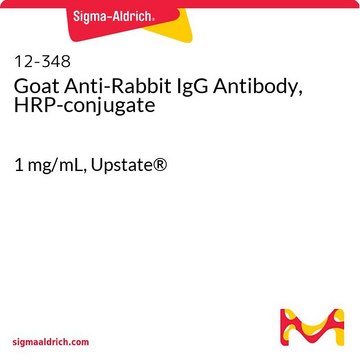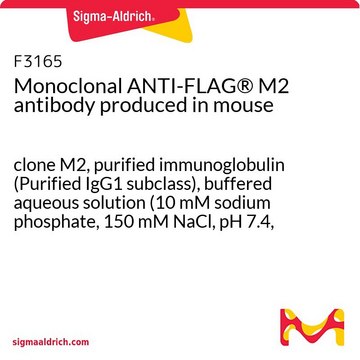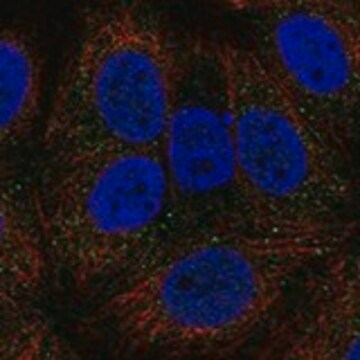MABE1121
Anti-Ago1 Antibody, clone 4B8
clone 4B8, from rat
Synonim(y):
Protein argonaute-1, Argonaute1, hAgo1, Argonaute RISC catalytic component 1, Eukaryotic translation initiation factor 2C 1, eIF-2C 1, eIF2C 1, Putative RNA-binding protein Q99, Ago1
About This Item
Polecane produkty
pochodzenie biologiczne
rat
Poziom jakości
forma przeciwciała
purified immunoglobulin
rodzaj przeciwciała
primary antibodies
klon
4B8, monoclonal
reaktywność gatunkowa
human
metody
western blot: suitable
izotyp
IgG2aκ
numer dostępu NCBI
numer dostępu UniProt
Warunki transportu
wet ice
docelowa modyfikacja potranslacyjna
unmodified
informacje o genach
human ... AGO1(26523)
Opis ogólny
Specyficzność
Immunogen
Zastosowanie
Epigenetics & Nuclear Function
RNA Metabolism & Binding Proteins
Western Blotting Analysis: A representative lot detected Ago1-containing messenager ribonucleoprotein (mRNP) complexes primarily in the low density fractions of sucrose gradient-fractionated HEK293 lysate (Höck, J., et al. (2007). EMBO Rep. 8(11):1052-1060).
Immunoprecipitation Analysis: Representative lots immunoprecipitated FLAG-tagged Ago1, but not FLAG-tagged Ago2, Ago3, or Ago4 (Ender, C., et al. (2008). Mol. Cell. 32(4):519-528; Beitzinger, M., et al. (2007). RNA Biol. 4(2):76-84).
RNA Binding Protein Immunoprecipitation (RIP): Representative lots co-immunoprecipitated Ago1-associated RNAs, including mRNAs, miRNAs, and snoRNAs from human cell lysates (Li, Z., et al. (2009). J. Virol. 83(24):12751-12758; Ender, C., et al. (2008). Mol. Cell. 32(4):519-528; Beitzinger, M., et al. (2007). RNA Biol. 4(2):76-84).
Jakość
Western Blotting Analysis: 1.0 µg/mL of this antibody detected Ago1 in 10 µg of HeLa cell lysate.
Opis wartości docelowych
Postać fizyczna
Przechowywanie i stabilność
Inne uwagi
Oświadczenie o zrzeczeniu się odpowiedzialności
Nie możesz znaleźć właściwego produktu?
Wypróbuj nasz Narzędzie selektora produktów.
Kod klasy składowania
12 - Non Combustible Liquids
Klasa zagrożenia wodnego (WGK)
WGK 1
Temperatura zapłonu (°F)
Not applicable
Temperatura zapłonu (°C)
Not applicable
Certyfikaty analizy (CoA)
Poszukaj Certyfikaty analizy (CoA), wpisując numer partii/serii produktów. Numery serii i partii można znaleźć na etykiecie produktu po słowach „seria” lub „partia”.
Masz już ten produkt?
Dokumenty związane z niedawno zakupionymi produktami zostały zamieszczone w Bibliotece dokumentów.
Nasz zespół naukowców ma doświadczenie we wszystkich obszarach badań, w tym w naukach przyrodniczych, materiałoznawstwie, syntezie chemicznej, chromatografii, analityce i wielu innych dziedzinach.
Skontaktuj się z zespołem ds. pomocy technicznej








